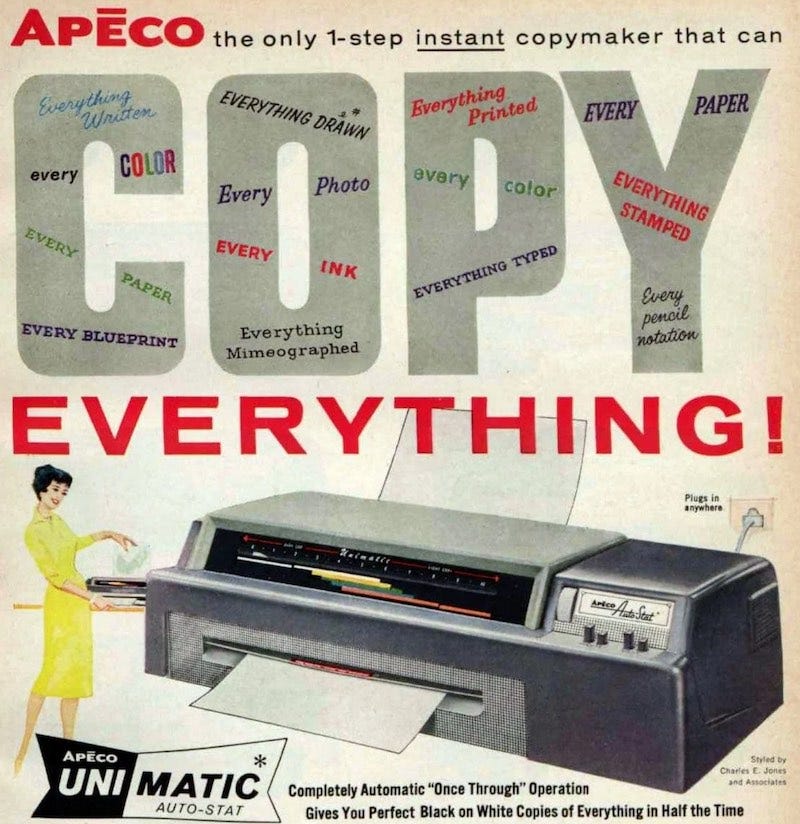This week I’m thinking about how we can take the pressure off of the creative process of doing our Most Creative Work. One of the best ways to do that is to lift or copy ideas that you are hearing and seeing around you.
For me, the lifting process is quite natural. I might read something and it has me thinking about something similar that was already on my mind, and away I go.
This process might be more natural for me because that’s how I learned how to play music: By taking other people’s music and recreating it on my instrument.
I once read that the poet Kenneth Goldsmith would employ an exercise in which he would copy other texts into his work as part of his style of “uncreative writing”.
My books are so boring that even the copy editors can’t read them.” He believes that the propositions his writing presents—uncreative writing’s permission to borrow entire texts, for example—are more interesting than the writing itself. “I don’t have a readership,” he said. “I have a thinkership.”1
I would go as far as to suggest that copying other works is a spiritual act because you are admitting that you can’t do this alone. That you are willing to surrender yourself to the body of work that all of humanity has made before you and just work with a bit of that.
Yes, There Are Limits
The inner lawyer inside you is starting to get annoyed at me, so I will admit there are limits to how much you can copy without getting in trouble and without violating your own personal code of ethics. In many cases, the problem can be fixed by just giving credit where it’s due.
But thinking about this topic made me realize that copying is what makes an app like Canva so useful - the templates give even professional graphic designers some good concepts to start playing around with.
Because everything happens in stages. If the first stage of your work has stuff in it from other sources, then when you take a second pass at it you can shed some of that from the work. By the third pass who would even know that you started with someone else’s idea?
The name of the game is to keep it moving. Especially as you get older and you have more baggage associated with your work. The voices get louder. You don’t have to turn the inner critic off, you just have to not listen to it. The best way to do that is to keep your work moving.
Action Items
How can you incorporate “healthy borrowing” into a part of the creative process where you might be getting stuck often?
What is your Most Important Action that helps set the stage for doing your Most Creative Work every day?
I am hosting a workshop next Thursday night, August 10th at 7pm EST on this topic of Keeping Your Projects Moving. Use promo code IAMCREATIVE for $5 off.
Thanks for reading and see you again soon,
Elliott
The Poet Who Went Too Far - New Yorker Magazine




I share with you, the experience of doing this as a musician.
Austin Kleon wrote a great book on this idea: Steal Like an Artist: 10 Things Nobody Told You About Being Creative https://a.co/d/dz556TN